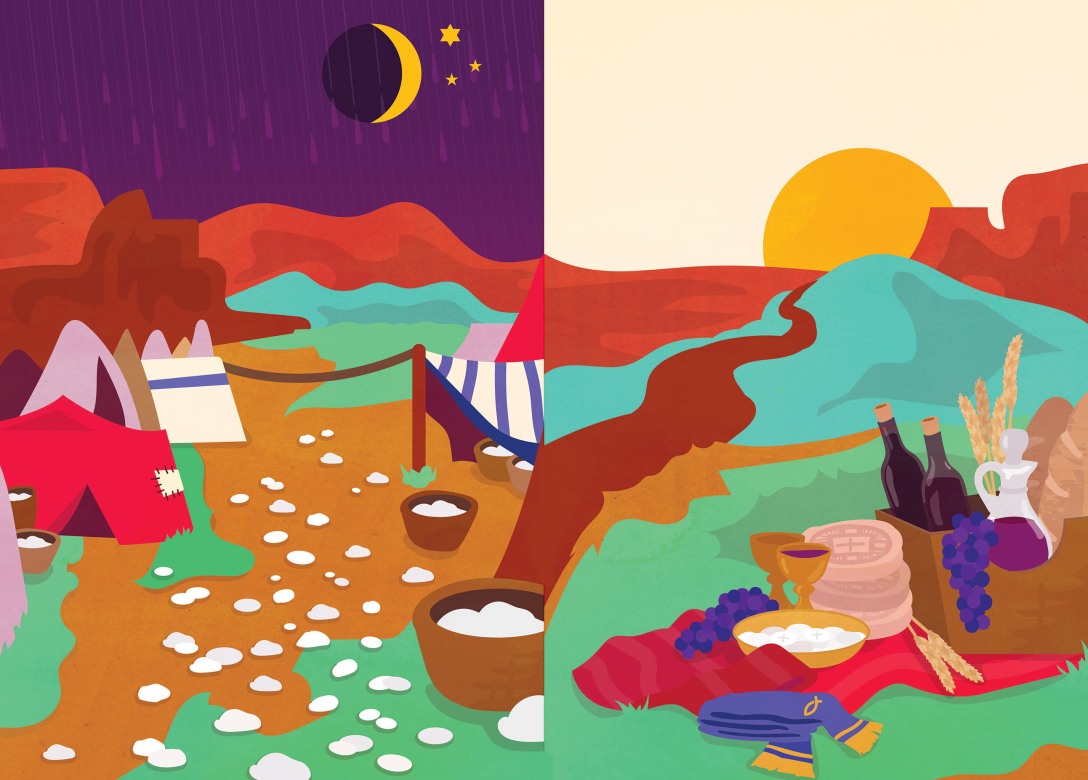Christ instituted the Eucharist on the occasion of the Jewish feast of Passover. If there is an interpretive context for what Jesus was doing in the upper room with His Apostles, then it must surely include this.
The holy day of Passover celebrates the event for which it is named, when God liberated the Israelites from Egyptian captivity. The Passover marks the Israelites’ transition from slavery to their calling as the holy People of God. Through God’s action and His leadership in Moses, the descendants of Abraham would progress in their privileged relationship with the Lord. To liberate His People from their Egyptian oppressors, God unleashed a series of plagues. Exodus records that the last plague was the killing of the firstborn son of each household—something the Israelites would be exempt from so long as they followed the Lord’s instructions. They were told to slaughter an unblemished lamb and sprinkle its blood on the door posts. They were to consume the lamb and also partake of unleavened bread. The Israelites were instructed to commemorate this event every year.
This remarkable event of salvation ultimately culminated in the covenant at Sinai, where Moses received the Ten Commandments. Through the covenant, the Israelites belonged to God and God to the Israelites. The Passover, then, led to the Mosaic covenant, which would bind God with his people until the New Covenant in Christ. Several centuries later, Jesus would again establish a covenant, the New Covenant, which would fulfill and surpass the Mosaic Covenant. At the Last Supper, Jesus institutes the New Covenant. In fact, the Last Supper is the only occasion that Jesus even refers to a covenant. Just as the blood of the lamb saved the Israelites as they escaped from Egypt, and just as Moses sprinkled blood on the Israelites to mark the Mosaic Covenant, so Christ initiates the New Covenant in his own blood—the blood of his sacrificial death, the blood made present at the Eucharist.
Referring to the wine, Jesus declares it to be “the blood of the new covenant,” a striking reference to Moses’ own words at Sinai in which he, too, declares the blood to be “the blood of the covenant” as he sprinkles it on the people. So whatever else the Eucharist may be—and as we will see, it is inexhaustible in its meaning—we can at least admit that, at the Last Supper, Jesus is establishing a new era in salvation history. This is the time of the New Covenant, a time which would fundamentally transfigure what had come before:
The days are surely coming, says the Lord, when I will make a new covenant with the house of Israel and the house of Judah. It will not be like the covenant that I made with their ancestors when I took them by the hand to bring them out of the land of Egypt… I will put my law within them, and I will write it on their hearts; and I will be their God, and they shall be my people.
Jeremiah 31:31-33
The New Covenant would transform what came before; in fact, Christ’s covenant would do so by inwardly transforming God’s very people. Whereas the Mosaic Law may have only aided God’s people as a sort of external guide, Christ would “write” the Law “on their hearts.” With the grace of Christ, God can truly say “they shall be my people” in an even deeper way than before: Now, God’s people become his through grace—through an adoption as sons and daughters into the family of God.
The Eucharist, then, is somehow related to this new era of salvation, an era which involves the transformation of the human person into intimate union with the Lord. How does it do this? When we look closer at Christ’s words, we notice something peculiar: He attaches his sacrificial death to the institution of the Eucharist. The wine of the Eucharist is the “blood of the New Covenant,” as we have seen. But it is the blood “which is poured out for many for the forgiveness of sins.” Christ connects his impending death with what is happening now at the Last Supper. Even the separate consecration of the bread and wine suggest his future sacrifice, when his body and blood will be violently separated. The Eucharist is included in Christ’s saving death; and his saving death is included in the Eucharist. The passion of Christ starts at the Last Supper and ends with his death on Good Friday, when he declares “It is finished.”
Looking back at the Passover, we can decipher what’s going on. During the original Passover and its annual commemoration, a lamb is sacrificed. But that’s not all. The participants must also partake of the lamb. Christ is the true Lamb of God who offers himself as the saving victim of God’s People. But God’s people must also partake of the Lamb, and this takes place in the Eucharist, when Christ’s disciples consume his very body and blood—albeit mysteriously and under the appearances of bread and wine. The new era of salvation, which is won for us by Christ most notably on the cross, is nevertheless applied to God’s people in the Eucharist.

